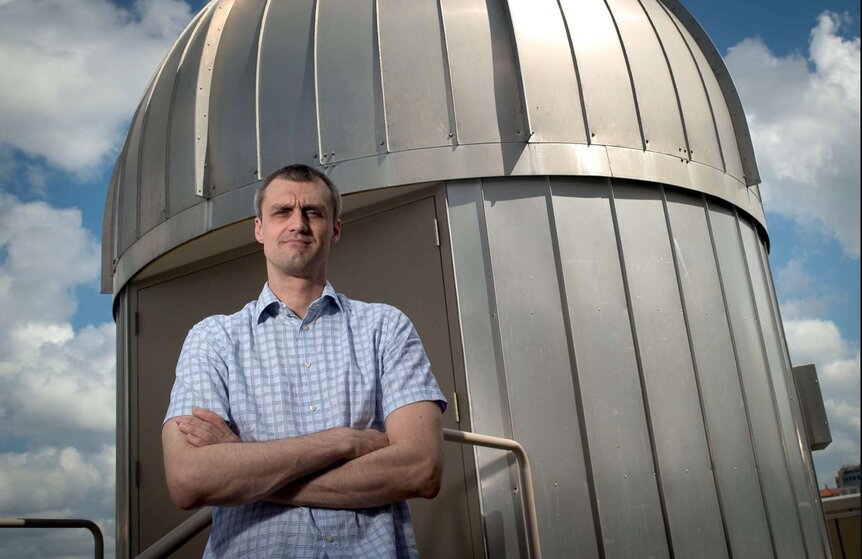Create a free profile to get unlimited access to exclusive videos, sweepstakes, and more!
Scorching new study explains why the sun's atmosphere is millions of degrees hotter than the surface

Our brilliant, warmth-giving star is still at best a mystery in many aspects, despite widespread solar-centric projects popping up over the past few years like NASA's Parker Solar Probe and NASA/ESA's Solar Orbiter inquiring into the Sun's solar winds, corona temperatures, and heliosphere.
One of the biggest questions pondered over in the last few decades is why the Sun's solar atmosphere is literally millions of degrees warmer than the surface. Now a recorded solar wind anomaly might aid in solving this conundrum and it took a 7-year-old orbiting instrument to indicate ways in which stored-up magnetic energy heats the solar atmosphere.
Using pictures from the Earth-orbiting Interface Region Imaging Spectrograph (IRIS) and the Atmospheric Imaging Assembly (AIA), scientists at Rice University, the University of Colorado Boulder, and NASA's Marshall Space Flight Center have uncovered clues showing that low-lying magnetic loops are heated to millions of degrees Kelvin.
Researchers on the study put forth the case that heavier ions like silicon are given preferential treatment and get roasted in both the solar wind and the threshold region between the sun's chromosphere and corona.
Within these zones, dense loops of magnetized plasma are in a constant state of arcing. Although these energized swirls are smaller and difficult to analyze, astrophysicists have long theorized that they have sheltered the magnetically driven mechanism that emits blasts of energy as nanoflares.
Since being first launched back in 2013, IRIS has operated as a lofty spectrometer specifically created to observe this obscure transition region. The primary goal of the small explorer is to try and understand how the solar atmosphere is energized.
In a new NASA-funded research paper published last week in the online journal Nature Astronomy, researchers detail "brightenings" in these reconnected loops that harbor strong spectral signatures of oxygen and heavier silicon ions.
Rice solar physicist Stephen Bradshaw, lead author Shah Mohammad Bahauddin at the Laboratory for Atmospheric and Space Physics at Colorado, and NASA astrophysicist Amy Winebarger pored over IRIS images that resolved details of those transition loops and detected pockets of super-hot plasma.
Those shots helped the team analyze ionic movements and temperatures inside the loops using the light they send out, appearing as spectral lines which act as telltale chemical "fingerprints."
"It's in the emission lines where all the physics is imprinted," said Bradshaw. "The idea was to learn how these tiny structures are heated and hope to say something about how the corona itself is heated. This might be a ubiquitous mechanism that operates throughout the solar atmosphere."
Located at the hot spots were reconnecting jets containing silicon ions that moved toward (blue-shifted) and away from (red-shifted) the observer (IRIS) at velocities up to 100 kilometers per second. This distinct Doppler shift was not detected for lighter oxygen ions.
"The transition region is only about 10,000 degrees Fahrenheit, but convection on the sun's surface affects the loops, twisting and braiding the thin magnetic strands that comprise them, and adds energy to the magnetic fields that ultimately heat the plasma," Bradshaw explained. "The IRIS observations showed that process taking place and we're reasonably sure at least one answer to the first part is through magnetic reconnection, of which the jets are a key signature."
Within that mechanism, the magnetic fields of the plasma strands rupture and reconnect at braiding spots into lower energy states, releasing their stored magnetic energy. The intersection of this dynamic process is where that plasma becomes superheated.
"We looked at the regions in these little loop structures where reconnection was taking place and measured the emission lines from the ions, chiefly silicon and oxygen," he noted. "We found the spectral lines of the silicon ions were much broader than the oxygen. We needed to explain it. We had a look and a think and it turns out there's a kinetic process called ion cyclotron heating that favors heating heavy ions over lighter ones.
"In the solar wind, heavier ions are significantly hotter than lighter ions. That's been definitively measured. Our study shows for the first time that this is also a property of the transition region, and might therefore persist throughout the entire atmosphere due to the mechanism we have identified, including heating the solar corona, particularly since the solar wind is a manifestation of the corona expanding into interplanetary space."
Bradshaw, Bahauddin, and Winebarger are pleased to have solved a vital part of the chromospheric puzzle, and are hopeful that more IRIS data will provide a more thorough overview of the mysterious solar forces at work, allowing them to craft a concise global theory regarding the Sun's complex atmosphere.




























